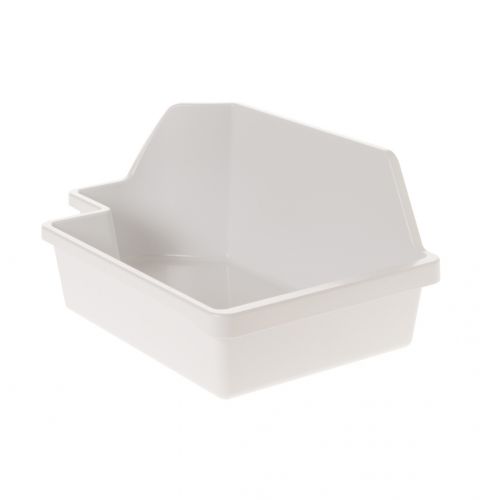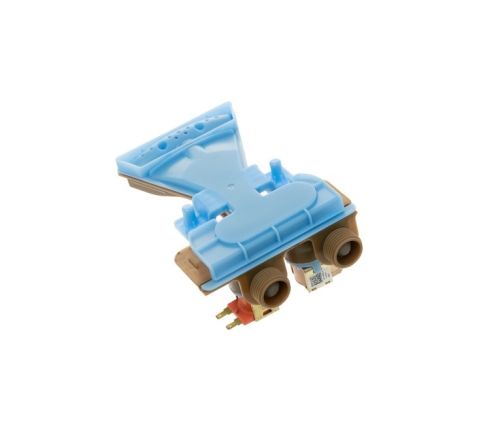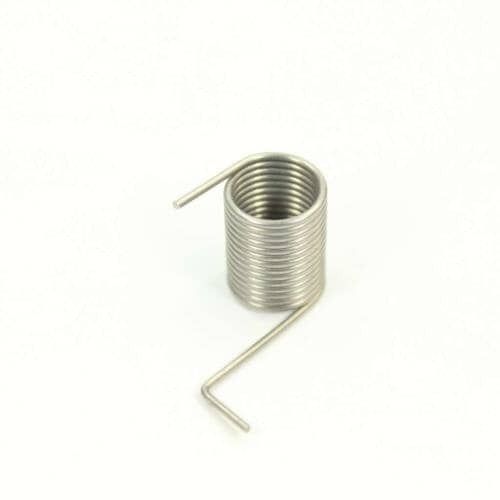
Samsung Refrigerator Ice Maker Issue: Solutions for Ice Production Challenges
Is your Samsung refrigerator not making ice as it should? Dealing with a malfunctioning ice maker can be frustrating, especially when you're eagerly anticipating a cold drink or need ice for entertaining guests. In this troubleshooting guide, we'll explore common issues that may be causing your Samsung ice maker not working and provide practical solutions to get it back up and running smoothly. Whether it's a simple fix or requires a bit more troubleshooting, we've got you covered.
|
Table of contents: |
Understanding the Samsung refrigerator ice maker
The ice maker in a Samsung refrigerator operates through a sophisticated process designed to provide users with a consistent supply of ice. At its core, the ice maker functions by creating ice cubes through a cycle of freezing, harvesting, and dispensing. This process begins with water entering the ice maker's reservoir, where it is filtered to remove impurities. Once the water is clean, it is pumped into ice molds, typically made of plastic or silicone, which are then placed in a freezer compartment. Within the freezer, the water freezes due to the low temperatures maintained by the refrigerator.
Here are the Samsung ice maker parts that are involved in the ice-making process:
- Inlet valve: This valve controls the flow of water into the ice maker. It opens when the ice maker calls for water and closes once the ice molds are filled.
- Ice molds: These are the individual compartments where water is poured and frozen to form ice cubes. They are typically made of plastic and come in various shapes and sizes depending on the refrigerator model.
- Heating element: The heating element is responsible for briefly warming the ice molds to release the ice cubes once they are fully frozen. This ensures easy ejection of the ice cubes into the bin.
- Motorized arm or rotating mechanism: This component is responsible for pushing the ice cubes out of the molds and into the ice bin below. It is usually activated after the heating element has loosened the ice cubes.
Find genuine Samsung parts at HnK Parts. From ice maker assemblies to water inlet valves, we've got you covered. Ensure your fridge runs smoothly with quality components. Shop now for ice maker trays, water filters, and more.
Why is my Samsung ice making fridge not making ice?
Several factors could contribute to your Samsung refrigerator's ice maker failing to produce ice. Here are the most common Samsung refrigerator ice maker problems:
- Water supply issues: Check if the water supply line is properly connected and supplying water to the refrigerator. A kinked or blocked water line can impede water flow to the ice maker, resulting in a lack of ice production.
- Low water pressure: Insufficient water pressure can prevent the ice maker from filling adequately, leading to smaller ice cubes or no ice at all. Ensure that the water pressure is within the recommended range for your refrigerator model.
- Freezer temperature: The freezer temperature should be set sufficiently low (around 0°F or -18°C) for the ice maker to function correctly. If the temperature is too high, the water may not freeze properly, hindering ice production.
- Ice maker switch: Make sure the ice maker switch is in the "On" position. If it's turned off, the ice maker will not produce ice even if all other components are functioning correctly.
- Ice maker components: Inspect the Samsung refrigerator parts for any signs of damage or wear, such as a broken motorized arm, malfunctioning heating element, or clogged water inlet valve. Replace or repair any faulty parts as needed.
- Ice build-up: Excessive ice build-up within the ice maker or ice bin can obstruct the ice-making process. Thawing and cleaning the ice maker regularly can prevent such issues.
- Resetting the ice maker: Sometimes, resetting the ice maker can resolve temporary glitches or errors. Refer to your Samsung refrigerator troubleshooting manual for instructions on how to reset the ice maker.
Samsung refrigerator ice maker troubleshooting steps
Samsung refrigerators are known for their advanced features, including ice makers that provide convenient access to ice cubes whenever needed. However, like any appliance, issues may arise with the ice maker from time to time. Here are the troubleshooting steps if your Samsung refrigerator ice maker not working:
Basic checks:
Before diving in & finding out why is my Samsung refrigerator is not making ice, it's essential to perform some basic checks:
- Power supply: Ensure that the refrigerator is properly plugged in and receiving power. Check the circuit breaker or fuse box to rule out any electrical issues.
- Door alignment: Make sure the refrigerator doors are properly closed and sealed. Poor door alignment can lead to temperature fluctuations, affecting ice production.
- Freezer temperature: Verify that the freezer temperature is set to the recommended level for ice production, typically between 0°F and 5°F (-18°C to -15°C).
Temperature settings:
Incorrect temperature settings can significantly impact ice maker performance. Follow these steps to adjust the temperature settings and resolve refrigerator ice maker not working issues:
- Freezer temperature adjustment: Access the refrigerator's control panel and adjust the freezer temperature to the recommended setting for ice production.
- Check for frost buildup: Excessive frost buildup in the freezer can obstruct airflow and affect ice production. The Samsung defrost ice maker needs to be defrosted if necessary, and any frost that has accumulated should be removed.
Water Supply:
A steady water supply is crucial for proper ice maker function. Check the following:
- Water line: Ensure that the refrigerator's water line is properly connected and not kinked or damaged. Replace any damaged water lines.
- Water filter: If your refrigerator has a water filter, check if it's clogged or needs replacement. A clogged filter can restrict water flow to the ice maker.
- Water pressure: Verify that the water pressure is sufficient to fill the ice maker tray adequately. Low water pressure can result in small or incomplete ice cubes.
Ice maker components:
Inspecting and troubleshooting an ice maker on a refrigerator individual components can help identify specific issues:
- Ice maker assembly: Examine the ice maker assembly for any visible signs of damage or malfunction. Replace any defective components.
- Ice maker fill Tube: Check the fill tube for clogs or obstructions that may prevent water from reaching the ice maker. Clear any blockages using a soft brush or warm water.
- Ice maker sensor: Some Samsung refrigerator parts are equipped with sensors to detect ice levels. Ensure that the sensor is clean and unobstructed.
Resetting the ice maker:
If all else fails, Samsung fridge ice maker reset may resolve the issue:
- Manual reset: Refer to the refrigerator's user manual for instructions on manually resetting the ice maker. This typically involves pressing and holding specific buttons on the control panel.
- Power cycle: Unplug the refrigerator for a few minutes and then plug it back in. This can sometimes reset the ice maker and resolve minor issues.
- Factory reset: If available, perform a factory reset on the refrigerator to restore all settings to their default values.
Know more about How to Set Temperature on Samsung Refrigerator
Advanced solutions for Samsung refrigerator ice maker issues
Even after performing basic troubleshooting steps, some Samsung refrigerator ice maker issues may persist. In such cases, more advanced solutions may be necessary to resolve the problem effectively.
Replacing faulty parts in the Samsung refrigerator ice maker:
If troubleshooting steps fail to resolve the issue, it may be necessary to replace faulty components within the ice maker. Here are some common Samsung refrigerator replacement parts that may require replacement:
- Ice maker assembly: If the ice maker assembly itself is damaged or malfunctioning, replacing it with a new one may be necessary. This is often the case if the ice maker fails to produce any ice at all.
- Water inlet valve: The water inlet valve controls the flow of water into the ice maker. If it's defective or clogged, it can hinder ice production. Replacing the water inlet valve can restore proper water flow to the ice maker.
- Ice maker control module: The control module regulates the timing and operation of the ice maker. If it's faulty, the ice maker may not function correctly. Replacing the control module can resolve issues with ice maker operation.
- Ice maker sensor: Some Samsung refrigerators feature sensors that detect ice levels and regulate ice production. If the sensor is malfunctioning or dirty, it may need to be replaced to restore proper functionality.
- Water filter housing: If the water filter housing is cracked or damaged, it can lead to leaks or improper water filtration. Replacing the water filter housing can prevent water-related issues with the ice maker.
Professional assistance for Samsung refrigerator ice maker problems:
If troubleshooting steps and part replacements fail to resolve the issue, seeking professional assistance from a certified technician may be necessary. Professional technicians have the expertise and specialized tools required to diagnose and repair complex issues with Samsung refrigerator ice makers.
When seeking professional assistance, consider the following:
- Authorized service centers: Contact Samsung's authorized service centers to ensure that your refrigerator is serviced by trained technicians using genuine Samsung parts.
- Warranty coverage: If your refrigerator is still under warranty, repairs may be covered by Samsung. Check the warranty terms and conditions to determine your eligibility for free or discounted repairs
- Diagnostic services: Professional technicians can perform thorough diagnostic tests to identify underlying issues with the ice maker and recommend appropriate solutions.
Know more about How To Clean Frigidaire Ice Maker: The Ultimate Guide
Preventive measures for Samsung refrigerator ice maker problems
Preventing issues with your Samsung refrigerator ice maker before they occur can save you time, money, and frustration in the long run. Implementing preventive measures can help maintain optimal performance and prolong the lifespan of your ice maker. Here are some proactive steps you can take:
- Regular cleaning:
Keeping your refrigerator and ice maker clean is essential for preventing buildup that can impede performance. Follow these cleaning tips:
- Ice maker tray: Periodically remove and clean the ice maker tray to prevent mineral deposits and residue from accumulating.
- Water dispenser: Clean the water dispenser and ice chute regularly to prevent mold and bacteria growth.
- Water filter: Replace the water filter as recommended by Samsung to ensure proper water filtration and prevent clogs.
- Proper maintenance:
Routine maintenance can help identify potential issues early and prevent them from escalating. Consider the following maintenance tasks:
- Inspect seals and gaskets: Check the door seals and gaskets for any signs of wear or damage. Replace them if necessary to maintain proper insulation and temperature control.
- Monitor freezer temperature: Keep an eye on the freezer temperature and adjust it as needed to ensure optimal ice production. Avoid setting the temperature too low, as it can lead to frost buildup.
- Clear ice maker fill tube: Regularly check the ice maker fill tube for obstructions and clear any blockages to ensure consistent water flow.
- Use filtered water:
Using filtered water in your refrigerator can prevent mineral buildup and impurities that can affect ice quality and clog the ice maker. Consider installing a water filtration system or using a refrigerator with built-in water filtration for improved ice quality.
- Avoid overloading:
Overloading the ice maker with excessive ice production demands can strain its components and lead to premature wear and tear. Use ice as needed and avoid overwhelming the ice maker with large quantities of ice at once.
- Address issues promptly
If you notice any issues with your Samsung refrigerator ice maker, such as decreased ice production or unusual noises, address them promptly. Ignoring minor issues can lead to more significant problems down the line. Refer to the troubleshooting steps outlined earlier or seek professional assistance if needed.
Troubleshooting solutions for a Samsung refrigerator ice maker not making ice can vary from basic checks such as ensuring power supply and proper temperature settings to more advanced steps like inspecting and replacing faulty components. Regular maintenance, prompt attention to issues, and the use of filtered water can help prevent problems and ensure consistent ice production. By following these troubleshooting steps and seeking professional assistance when necessary, users can effectively resolve ice machine not working issues and enjoy uninterrupted access to ice.
FAQs
Why is my Samsung ice maker not working?
If your Samsung ice maker is not working, it could be due to issues with the water supply, temperature settings, or malfunctioning components like the ice maker assembly or water inlet valve.
What causes a Samsung ice maker to freeze up?
A Samsung ice maker may freeze up due to factors such as excessive frost buildup, a faulty defrost system, or a defective water inlet valve, hindering proper ice production and causing the unit to freeze over.
Why is my ice maker not working, but the water does?
If your ice maker is not working but the water dispenser is functioning properly, it could indicate problems with specific components such as the ice maker assembly, water inlet valve, or sensor, which may require inspection and repair.











